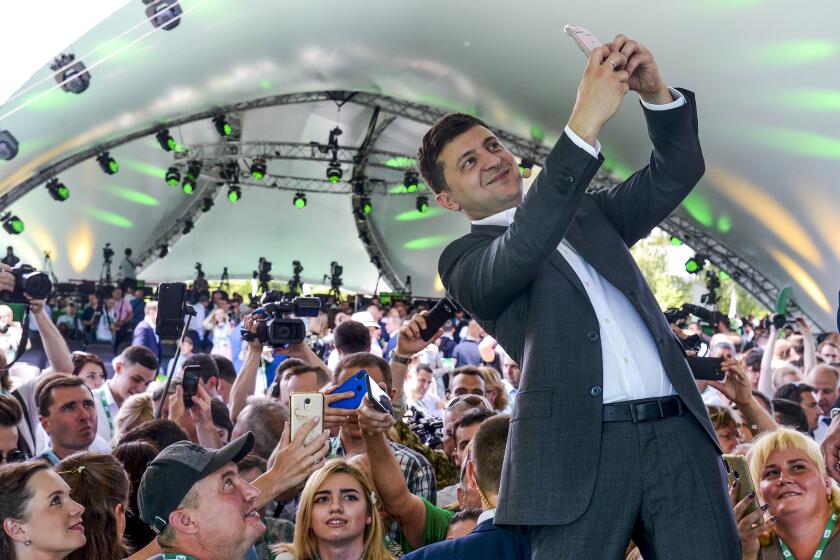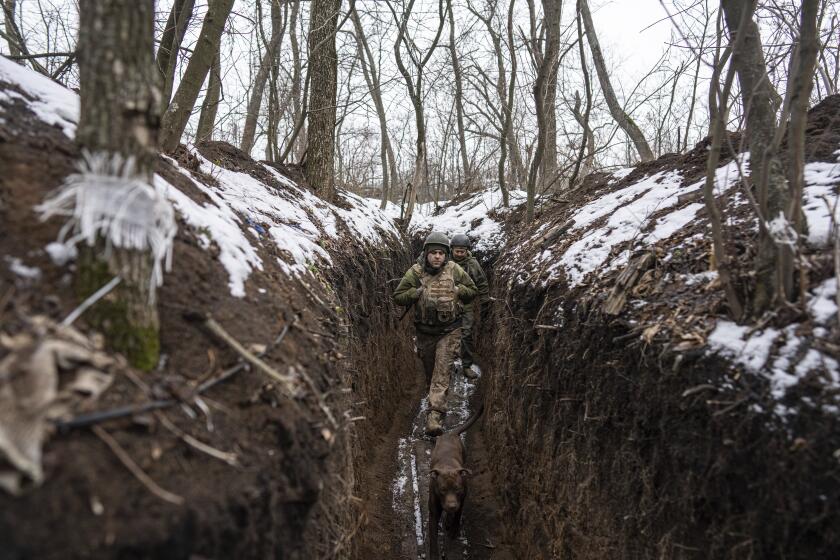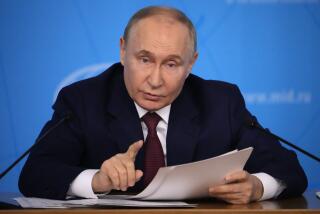U.S. and NATO remain skeptical of Russian claims of troop withdrawals
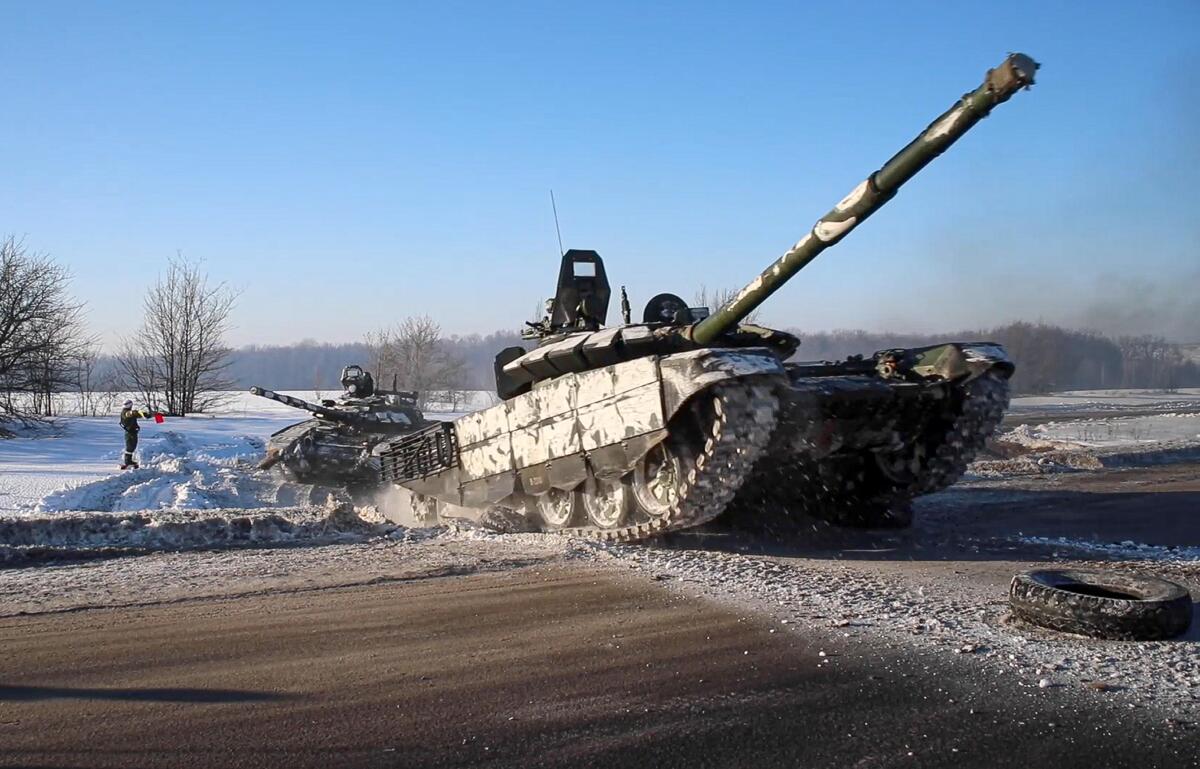
- Share via
KYIV, Ukraine — American and European officials cast doubt Wednesday on Russia’s claims that it was withdrawing troops from the Ukrainian border in an apparent attempt to defuse tensions that have unsettled the region and rekindled a Cold War-style standoff with the West.
“Unfortunately, there’s a difference between what Russia says and what it does, and what we’re seeing is no meaningful pullback,” Secretary of State Antony J. Blinken said on ABC News. “On the contrary, we continue to see forces, especially forces that would be in the vanguard of any renewed aggression against Ukraine, continuing to be at the border, to mass at the border.”
Blinken’s comments, coupled with similar warnings from NATO, underscored the anxiety among allies that a bloody and destabilizing war could begin at any moment. In addition to causing potentially tens of thousands of deaths, a war between Russia and the former Soviet republic could disrupt international energy supplies and widen fault lines among global powers, increasing the chance for miscalculations that could lead to broader conflict.
“We said that we were in a window of time at which the invasion could come at any time,” Blinken said. Russian President Vladimir Putin, he said, has “put in place the capacity to act on very short notice. He can pull the trigger. He could pull it today, he could pull it tomorrow, he could pull it next week. The forces are there if he wants to renew aggression against Ukraine.”
Blinken’s assessment amplified skepticism from NATO’s leader and U.S. officials. President Biden said Tuesday that Russian troops remained “very much in a threatening position” and that “an invasion remains distinctly possible.” On Wednesday night, a senior administration official said Russia has actually added as many as 7,000 troops near Ukraine’s border in recent days.
NATO Secretary-General Jens Stoltenberg told reporters in Brussels on Wednesday that, “on the contrary, it appears that Russia continues the military buildup.”
Stoltenberg noted that in the past, Russia’s massing of troops and equipment near Ukraine had seen soldiers pulled back but equipment remaining in place.
“They have always moved forces back and forth. So just that we see movement of forces ... doesn’t confirm a real withdrawal,” he said, adding that Russia retains the capability for launching a full-fledged invasion of Ukraine without any warning. “What we need to see is a real withdrawal of forces which is lasting and real.”
NATO and the Biden administration are trying to balance their hopes for diplomacy against fears of what State Department spokesman Ned Price called “the Russian playbook,” which he characterized as misinformation intended to disguise its true motives.
Moscow, however, continued to insist Wednesday that it was withdrawing troops and materiel, moves that Western leaders would see as potential signs that the Kremlin was dialing down tensions in the face of an international pressure campaign. The U.S. and its allies have promised to level crippling sanctions on Russia in the event of an invasion.
The troop withdrawals have been highlighted in videos and statements issued by the Russian Defense Ministry. One such video depicted a nighttime scene of a train pulling flatbed carriages loaded with armored vehicles as it crossed a bridge in Crimea to “the point of permanent deployment,” meaning their regular base. Russia seized the Crimean peninsula from Ukraine in 2014.
Putin has signaled an interest in resolving the crisis through diplomacy.
In discussions with German Chancellor Olaf Scholz on Tuesday, the Russian president said he intended to rely on negotiations to convince the West to accede to Russia’s security demands, which include a ban on NATO membership for Ukraine, a pullback of missiles from sensitive areas near Russia and a rollback of the transatlantic alliance’s infrastructure to 1997 levels.
Over the last few weeks, Russia has assembled a large-scale force comprising more than 150,000 troops, along with armored vehicles, helicopters, fighter jets, battleships and submarines, near Ukraine’s borders, almost encircling the former Soviet republic in what many feared was a prelude to a blitz.
Some Ukrainians are starting to wonder whether their neophyte leader has the smarts and strength to lead them through a moment of peril.
Although Russian military exercises in Crimea have apparently concluded, other drills near Ukraine’s border with Belarus were ongoing. Belarus, a top Russian ally, is hosting more than 30,000 Russian troops on its territory as part of those drills. But Belarusian Foreign Minister Vladimir Makei said those troops would also head home once the drills end Sunday.
“Not a single [Russian] soldier or a single unit of military equipment will stay on the territory of Belarus after the drills with Russia,” Makei told reporters.
In recent days, Western sources had raised the alarm that an invasion was set to begin Wednesday. In Ukraine, President Volodymyr Zelensky proclaimed Wednesday a new national holiday, Unity Day.
On Wednesday morning, crowds assembled under overcast skies in Kyiv’s Olympic National Sports Complex stadium and unfurled an almost 200-yard-long Ukrainian flag. Buildings in other cities were also draped with the yellow-and-blue national flag.
Zelensky participated in a flag-raising ceremony at Boryspil Airport, just outside Kyiv, before he was set to travel to the western town of Rivne to attend a military training exercise and, from there, on to the eastern port city of Mariupol.
With hostilities failing to materialize early Wednesday, Russian officials began a series of mocking broadsides.
With Russian troops just miles away, the residents of a small Ukrainian village wonder if a possible invasion has its sights set on them.
“I’d like to request U.S. and British disinformation ... to publish the schedule for our upcoming invasions for the year,” Russian Foreign Ministry spokeswoman Maria Zakharova wrote on her official channel on the messaging app Telegram.
Russia’s ambassador to the European Union, Vladimir Chizhov, said “wars in Europe rarely start on Wednesday.”
But the levity belied the gulf between the two sides. The North Atlantic Treaty Organization has dismissed Putin’s demand that Ukraine be barred from membership as a nonstarter, while Biden insisted Tuesday that the U.S. and its allies did not pose a threat to Russia.
Breaking News
Get breaking news, investigations, analysis and more signature journalism from the Los Angeles Times in your inbox.
You may occasionally receive promotional content from the Los Angeles Times.
With more international interest in diplomacy, Russian officials insist that Ukraine’s nonalignment with NATO must be addressed.
“Russia hears that Ukraine is not prepared to join NATO today, and we know this premise. And they say right away that it won’t be admitted tomorrow but will be admitted when they prepare it for this,” Putin said at a news conference after his meeting Tuesday with Germany’s Scholz. “But this might be too late for us.”
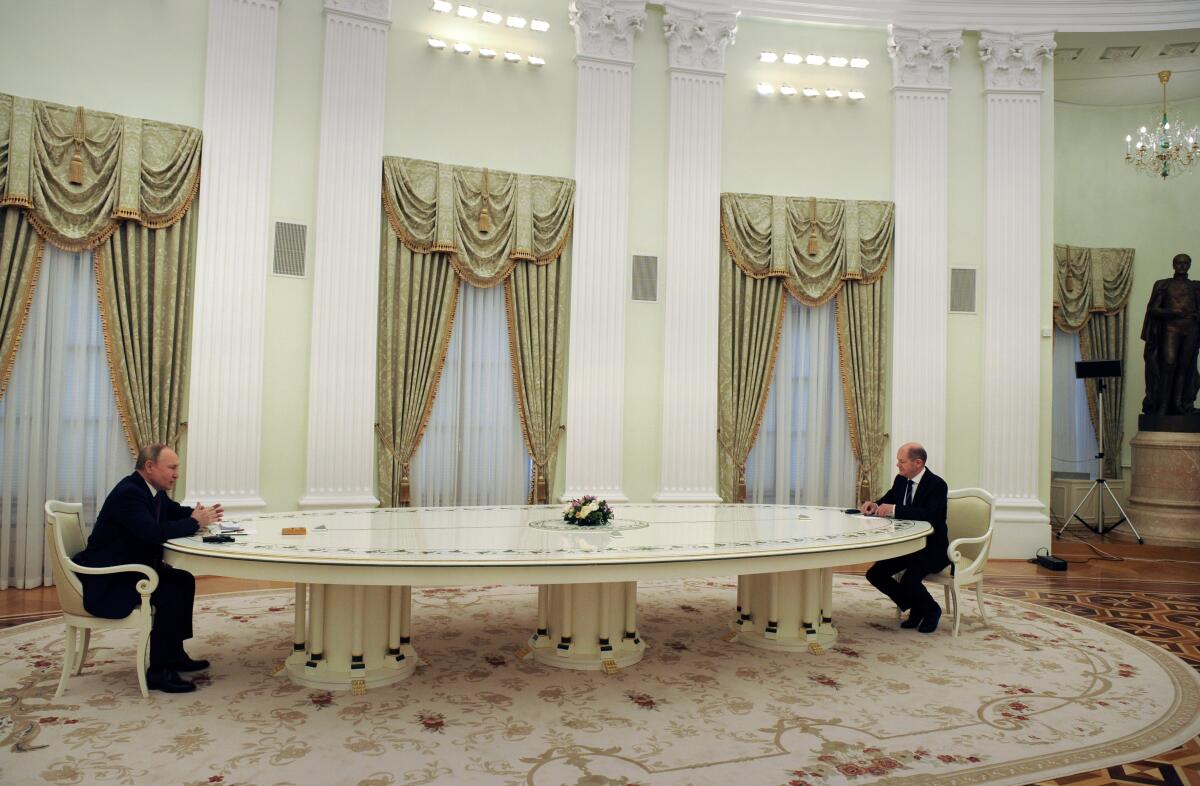
Although the goal of seeking NATO membership is written into Ukraine’s Constitution, Ukrainian and Western officials have in recent days broached the idea of some flexibility over the issue.
“Maybe the question of open doors is for us like a dream,” Zelensky said of membership in the alliance at a news briefing Monday. “When will we get there, no one knows — not only Ukraine, but also some NATO members.”
At the same briefing, Scholz, who visited Kyiv before heading to Moscow, said that the question of Ukraine’s membership was “not on the agenda.”
Bulos reported from Kyiv and Bierman from Washington. Times staff writer Tracy Wilkinson in Washington contributed to this report.
More to Read
Sign up for Essential California
The most important California stories and recommendations in your inbox every morning.
You may occasionally receive promotional content from the Los Angeles Times.
